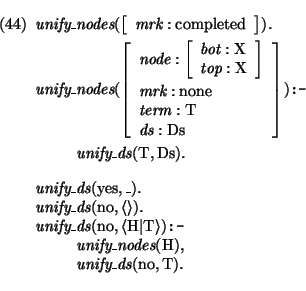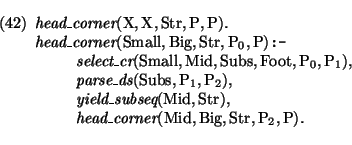However, once it is known that at some node, no further adjunctions
are possible, then we might just as well unify the bottom- and top
parts of that node immediately. This may be useful, in cases where
this unification fails -- in that case we may abandon a search path
without a solution much earlier. Thus, it is possible to implement
the
![]() predicate in an incremental fashion.
predicate in an incremental fashion.
The incremental unification of top and bottom features is easily
implemented. Firstly, the predicate
![]() is defined in
such a way that completed nodes are not penetrated: these nodes are
already unified in a previous cycle. Furthermore, this predicate is
now called when partial trees are completed; that is, after a
substitution, and after an adjunction.
is defined in
such a way that completed nodes are not penetrated: these nodes are
already unified in a previous cycle. Furthermore, this predicate is
now called when partial trees are completed; that is, after a
substitution, and after an adjunction.
The predicate
![]() is defined as follows.
is defined as follows.

The predicate
![]() is changed as follows:
is changed as follows:
